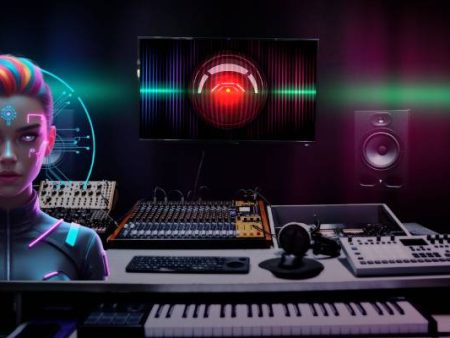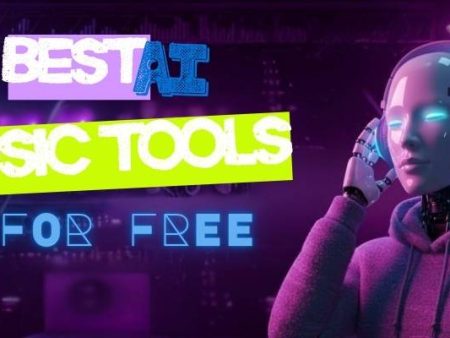I’ll start with a confession. The first time I heard a piece of music generated entirely by AI, I thought it was a remix of a human-made track.
It wasn’t. It was composed, arranged, and produced by a system trained on thousands of songs. That realization shook me—not because it was flawless, but because it was convincing.
And here’s the thing: in 2025, AI music generation is no longer a novelty. It’s everywhere—used by independent creators, streaming platforms, advertisers, and even professional artists.
We’re officially in a moment where “machine-made music” isn’t just an experiment—it’s part of the mainstream.
So if you’re curious which tools stand out, how they compare, and what they mean for creativity, this article digs deep.
It’s not just about features or pricing. It’s about emotion, practicality, and whether can ai capture human expression—or whether we’re risking a flood of soulless audio wallpaper.
From Mozart to Machine: A Short History of AI in Music
Music and technology have always danced together. The piano revolutionized composition. The phonograph redefined listening.
The synthesizer changed pop forever. Now we’re in the “from Mozart to machine:” chapter—where algorithms don’t just play music, they write it.
In 2020, AI tools like OpenAI’s Jukebox made headlines by generating tracks in the style of famous artists.
By 2023, apps like Aiva and Amper Music were already being used in commercials, films, and video games.
Fast-forward to 2025, and the ecosystem has exploded. Now dozens of platforms compete to offer musicians, brands, and hobbyists the chance to create music instantly.
The journey from Mozart’s hand-written scores to machine-driven melodies is both thrilling and unsettling. But one thing is clear: the tools are here to stay.
Why Compare AI Music Generators Now?
If you’re reading this, chances are you’ve seen the hype. But not all AI music generators are equal. Some focus on professional-grade production, others on quick background tracks. Some lean toward electronic or pop, others toward cinematic scoring.
And in a world where streaming platforms release 120,000 new tracks daily (according to Luminate’s 2024 Music Report), knowing which tools help you stand out isn’t just nice—it’s survival.
The Best AI Music Generators in 2025: A Side-by-Side Look
Here’s where we dive into specifics. Below, I’ve compiled comparisons of the top players in AI music generation this year.
1. Aiva (Artificial Intelligence Virtual Artist)
- Best for: Classical, cinematic, and orchestral compositions.
- Strengths: Aiva has carved out a niche for symphonic scoring. Its compositions are often indistinguishable from human orchestration. Used in films, trailers, and even video games.
- Weaknesses: Sometimes too “clean”—it lacks the imperfections that give human performances their charm.
- Pricing: Freemium, with advanced features starting around $15/month.
My take: Aiva impresses with structure and scale. It’s like a machine version of Hans Zimmer, but I sometimes find myself missing the grit of real instruments recorded in messy studios.
2. Amper Music
- Best for: Royalty-free background tracks for content creators.
- Strengths: Lightning-fast generation, intuitive interface, built for non-musicians. Great for YouTubers, podcasters, or marketers.
- Weaknesses: Tracks can feel generic. Better for background than spotlight.
- Pricing: Pay-per-track or monthly subscriptions starting at $25.
My take: Perfect for projects where speed and licensing are more important than artistry. If you want something quick that doesn’t get flagged, Amper is reliable.
3. Boomy
- Best for: Casual creators and viral experimentation.
- Strengths: Lets anyone generate songs in seconds, distribute them on Spotify or TikTok, and even monetize.
- Weaknesses: Tracks can sound repetitive. The novelty can wear off fast if you’re after depth.
- Pricing: Free tier with revenue-sharing; premium plans for more customization.
My take: Boomy is fun and democratic. It’s lowered the barrier to entry in a way I respect. But if you’re serious about artistry, you’ll need to work harder to refine its outputs.
4. Soundraw
- Best for: Video creators needing customizable soundtracks.
- Strengths: Combines AI with user-driven editing, letting you tweak mood, tempo, and instruments after generation.
- Weaknesses: Less suited for full songs with lyrics.
- Pricing: Subscription-based, around $20/month.
My take: I love the balance of AI and human control. It’s like telling the machine: “Good start, but let me drive for a bit.”
5. Ecrett Music
- Best for: Small businesses needing safe, royalty-free audio.
- Strengths: Simple interface, good for ads, explainer videos, or casual apps.
- Weaknesses: Output can feel canned, lacking surprise.
- Pricing: Affordable plans starting around $5/month.
My take: Ecrett isn’t glamorous, but it gets the job done. Think of it as stock photography for audio—convenient, though not groundbreaking.
6. Mubert
- Best for: Endless generative streaming.
- Strengths: Creates infinite, real-time generative music. Great for wellness apps, workouts, or meditation.
- Weaknesses: Not ideal for polished, fixed-length songs.
- Pricing: Free with pro options starting at $14/month.
My take: Mubert feels alive—like the music never ends. I’ve used it during writing sessions, and it really adapts to your flow.
Step-by-Step Guide: How to Choose the Right AI Music Generator
You might be wondering, “Okay, but which one’s for me?” Here’s a step-by-step guide: how to figure that out:
- Define Your Purpose
- Need tracks for ads or social content? → Amper or Ecrett.
- Want professional scoring? → Aiva.
- Experimenting for fun or TikTok? → Boomy.
- Looking for endless mood music? → Mubert.
- Set Your Budget
- Free experimentation: Boomy, limited Soundraw.
- Mid-range: Amper, Mubert, Soundraw.
- Premium for professionals: Aiva.
- Decide How Much Control You Want
- “One-click and done” → Boomy, Ecrett.
- “I want to tweak and refine” → Soundraw, Aiva.
- Check Licensing
- Content creators: prioritize platforms that offer royalty-free guarantees.
- Test Emotional Fit
- Don’t just listen once. Play generated tracks in context. Does it feel right for your story, brand, or emotion?
Can AI Capture Human Emotion in Music?
This is the crux of it. Can ai capture human depth? Can it replicate the goosebumps you get from a Nina Simone vocal or the raw grit of a garage band recording on a cheap mic?
The data says audiences often can’t tell the difference in blind tests. A 2024 MIT study showed that listeners misattributed 40% of AI-generated classical pieces to human composers.
But recognition isn’t the same as resonance. For me, AI-generated tracks often feel polished, clever, but emotionally flat. They mimic emotion, but they don’t live it.
And maybe that’s okay for background or functional music. But when it comes to anthems of heartbreak or protest songs, I still believe human imperfection carries the weight machines can’t.
The Future of Songwriting: A Hybrid Era
Looking forward, I think the future of songwriting: is hybrid. Machines will handle speed, structure, and endless iteration. Humans will provide stories, imperfections, and soul.
Here’s what I imagine:
- Artists will jam with AI tools like they jam with bandmates.
- Personalized music experiences will rise—songs adapting to your mood in real-time.
- Musicians will shift roles, becoming curators, editors, and storytellers guiding AI outputs.
That doesn’t mean AI will “steal” music. It means the very definition of songwriting expands. And maybe that’s not threatening—it’s liberating.
My Honest Take: Awe, Fear, and Acceptance
I’ll admit it—I’m in awe of the best AI music I’ve heard. Some tracks have fooled me. Some have inspired me.
And yet, I also feel a knot in my stomach about homogenization, about losing the wild unpredictability of human creativity.
But here’s where I land: technology always shifts art. What matters is whether we use it with care.
If we see AI as a collaborator, not a replacement, we’ll create new sounds we never imagined. If we use it lazily, we’ll drown in blandness.
And that’s on us, not the machines.


